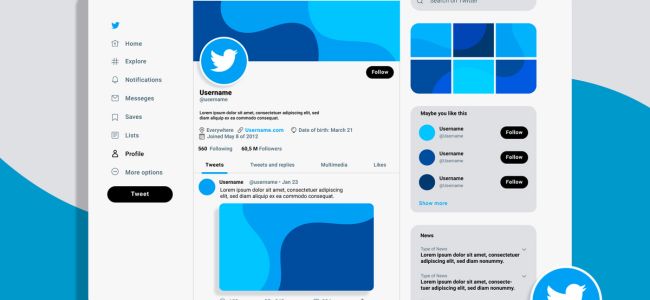Product Strategy in the VUCA World
- Strategy
- 5 min read
By Suhas Kelkar – Head of Engineering, Enterprise Asset Management
The era that we lives is known as VUCA because of its undeniably thrilling aspects, there are several factoids explaining this factor. The evolution of mobile phones: back in 1990, a mere million individuals worldwide owned a mobile phone, but today, an astonishing 6 billion people are unique mobile users, with nearly half of them using smartphones. Chess players are witnessing a personal defeat at the hands of a formidable computer, highlighting a significant shift in the realm of chess tournaments since 2005. Humans haven’t clinched victory against this high-spec computer. There also had been major computing advancements, when in 1999 Google used to take a month to index 50 million web pages which in under a minute by 2012. Further the technology witnessed a major change with the advent of cloud quantum computing, which is exponentially faster than today’s supercomputers. Then the astounding pace at which photos flood Instagram, an average of 1000 images are uploaded every second, amassing a grand total of 50 billion photos on the platform.
This blog will delve into the intricate realm of product strategy within the context of this dynamically changing landscape, VUCA world as identified by Suhas Kelkar, Head of Engineering, Enterprise Asset Management, OpenGov Inc.
Key Takeaways:
- VUCA encapsulates the dynamic and challenging nature of the modern business landscape.
- In this blog we will explore a central theme within the VUCA paradigm, disruption and the various types of disruptions.
- Further we will also delve into how Product Leaders can navigate the VUCA world.
What is VUCA?
The concept of VUCA, an acronym encompassing volatility, uncertainty, complexity, and ambiguity, holds profound significance in the realm of product leadership. This term originated within the US Army War College during the 1990s, coinciding with the conclusion of an era marked by conflicts. Gradually, the business world acknowledged and embraced this concept, utilizing it to articulate the dynamic, ever-evolving landscape of both local and global economies. Let’s delve into the four facets of VUCA, which include:
1. Volatility:
This aspect pertains to the rapidity of change experienced within an industry or market. It manifests through demand fluctuations, market turbulence, and the urgency to swiftly introduce products to market. The pace of change has exhibited a consistent acceleration, indicative of the world’s growing volatility.
2. Uncertainty:
The extent to which the future can be confidently predicted defines uncertainty. It encapsulates the challenge of comprehending ongoing developments. Uncertainty is both subjective, linked to people’s struggles in grasping current events, and objective, mirroring an environment’s complexity. As product leaders, this dimension of VUCA is especially pertinent, as building exceptional products hinges on understanding the landscape in which they will exist.
3. Complexity:
Complexity gauges the multitude of factors requiring consideration, encompassing their diversity and intricate interconnections. Heightened complexity obstructs comprehensive analysis and logical conclusions. This complexity holds significance for product leaders who are tasked with dissecting and predicting intricate environments, a crucial facet in steering product and service development.
4. Ambiguity:
Ambiguity denotes a lack of clarity in interpreting information. It arises when information is incomplete, inconsistent, or imprecise, resulting in uncertainty. Ambiguity’s prevalence underscores the challenge of interpreting concepts and ideas. Greater ambiguity intensifies the difficulty of interpretation.
As custodians of the future trajectory of products and services, product leaders bear the responsibility of forecasting customer needs and creating offerings that meet those requirements. Thus, comprehending the underpinnings of volatility, uncertainty, complexity, and ambiguity becomes paramount. These elements collectively provide insights into how to craft the next generation of successful products and services, a pursuit integral to the role of product leaders.
Disruption Within the VUCA Paradigm
Within the VUCA (Volatility, Uncertainty, Complexity, Ambiguity) world, disruption emerges as a pivotal force. The upcoming discourse delves into the intricate landscape of disruption, delving into its diverse forms and manifestations. Within this dynamic framework, the theme of disruption takes center stage.
Various Facets of Disruption
Disruption, in its multifaceted essence, plays a major role within the VUCA landscape, characterized by various forms and trajectories. Lets explore the types of disruption that shape this intricate landscape.
1. Technological Disruption:
The most straightforward form of disruption arises from technology. However, within the realm of technology-driven transformation, numerous categories of disruptions unfold, each distinct in its impact and implications, which include:
a. Bottom-up Technological Disruption:
An illustrative instance we all recognize is the introduction of digital cameras. Upon their initial entry into the market, they paled in comparison to conventional cameras, producing images of lower quality with blurry details and inadequate resolution. Professional photographers hesitated to adopt digital cameras due to the stark disparity in image quality. However, the pace at which technological advancements unfolded was staggering. In a mere span of five to ten years, digital cameras swiftly bridged the gap and even surpassed film cameras in terms of performance and quality. This remarkable progression led to the eventual obsolescence of film cameras. Astonishingly, a powerhouse like Kodak, with a market capitalization of 10 billion dollars, failed to recognize and respond to this bottom-up technological disruption. Their oversight, driven by the initial inferiority of digital cameras, resulted in their filing for bankruptcy in less than a decade.
For product managers or leaders navigating the VUCA landscape, the lesson resonates, dismissing technological disruptions due to their initial shortcomings can be perilous. Failing to gauge the exponential rate at which technology can improve might lead to disruptive forces catching up swiftly and drastically altering the competitive landscape. Vigilance in monitoring and adapting to technological progress is crucial to prevent one’s own offerings from becoming outdated.
b. Top-down Technological Disruption
The second category of technological disruption stands in stark contrast to the bottom-up approach. This scenario unfolds when technology enters the scene with an inherent superiority, right from its inception. However, the obstacle lies in its initial cost, rendering it inaccessible to the masses. A notable exemplar of this is evident in Tesla’s groundbreaking innovations. While Tesla cars embody superior technology and offer remarkable features, their cost has hindered widespread adoption even over a decade since their introduction. This reverse of the bottom-up progression is equally significant, demanding vigilant attention from product leaders. As economies of scale kick in with greater adoption, the price barrier is poised to diminish.
2. Big Bang Technological Disruption
The third facet of technological disruption introduces an even more potent force. In this case, technology arrives with both inherent superiority and cost-effectiveness right from day one. A striking instance of this is embodied by Google Maps’ incorporation of turn-by-turn navigation. This revolutionary move swiftly displaced established players like Garmin and TomTom from the GPS market. Google Maps’ fusion of superior accuracy and zero cost brought about this seismic shift. For product leaders, this form of disruption demands a particularly close examination, as its potential impact can be far-reaching.
An intriguing dimension of technological disruption lies in its ability to concurrently impact multiple industries. For product leaders, recognizing these imminent shifts and adapting proactively is paramount to secure their footing in a rapidly changing ecosystem.
3. Business Model Disruption
A recurrent theme in current news, instances like Uber’s transformation of the taxi industry, Netflix’s revolution in entertainment, and Airbnb’s reshaping of travel underline the power of business model disruptions. Often arising unexpectedly from nimble startups, these disruptions challenge established conventions and incumbent players. As a product leader, vigilance is paramount, regardless of the size or audacity of the challenger. These disruptions can unfold at an astonishing pace, upending industries in the blink of an eye. For instance, consider Hilton, an established hospitality brand that took 93 years to build an inventory of 600 rooms. In stark contrast, Airbnb amassed 900,000 rooms in just under four years—a vivid example of the rapidity at which disruptive business models can alter the landscape.
4. Behavioral Disruption
While relatively underdiscussed, behavioral disruption is undeniably present and potent. Movies like ‘The Social Dilemma’ underscore the profound changes technology has wrought in human behavior. A telling statistic, in 2019, individuals spent an average of 144 minutes daily on social networking, more than double the previous year. This shift in behavior holds significant implications for product leaders. The concept of the ‘zero moment of truth,’ coined by Google, becomes pertinent, buyers now extensively research even minor purchases online. This digital-age version of word-of-mouth is not only persistent but also magnified in its impact, affecting purchasing decisions. Managing and curating this online presence becomes essential to fostering a positive perception of one’s product or service.
These various disruptions, whether by technology, business models, or changing behavior, already constitute a significant upheaval. However, in the past three years, the world has been grappling with another disruption we’re all too familiar with, pandemic disruption. This multifaceted spectrum of disruptions underscores the ever-evolving landscape in which product leaders navigate, necessitating proactive adaptation to ensure their offerings remain relevant and effective.
4. Pandemic Disruption
One year ago, the world was abruptly thrust into the extraordinary event of the COVID-19 pandemic, a phenomenon likely to occur once in a century. The ensuing months have witnessed extensive discourse about the pandemic’s effects across industries.
Drawing from this, a concept known as the ‘technology adoption curve’ or ‘innovation adoption curve’ surfaces. Coined by Ian Rogers in 1962, this model elucidates how individuals embrace technology, categorized as innovators, early adopters, early majority, late majority, and more. This notion, often aligned with ‘crossing the chasm,’ underscores the process of technology assimilation. Amid the COVID-19 pandemic, this technology adoption curve shifted notably, shaping a distinct trajectory of technological implementation.
These various types of disruptions, technological, business model, behavioral, and pandemic provides a comprehensive overview of the intricate landscape.
How to Navigate the VUCA World?
A fundamental principle that could help one combating VUCA is VUCA itself, which means battling volatility with vision, uncertainty with understanding, complexity with clarity, and ambiguity with agility. This approach, encapsulated in the acronym ‘VUCA,’ serves as the cornerstone for product leaders and strategists. In the realm of the VUCA world, embracing this principle becomes the guiding mantra for thriving amidst challenges. Lets delve into each of the aspect encompassing VUCA.
1. Volatility with Vision:
Volatility, a term denoting the rapid pace of change within an industry, is intricately linked with demand fluctuations, market turbulence, and rapid time-to-market considerations. Illustrating the strategic utilization of volatility, a standout example revolves around Amazon Web Services (AWS). Reflecting on Amazon’s origins, their core business in 2000 centered on book sales, a venture characterized by pronounced seasonal fluctuations. Notably, the holiday season saw a surge in demand, whereas subsequent months witnessed a steep decline. This volatility led to the creation of AWS, as Amazon grappled with the challenge of scaling infrastructure to meet peak demands during the holidays while efficiently utilizing resources during slower periods. This juxtaposition of volatility and resource utilization birthed the visionary concept of cloud computing propelling Amazon into new realms. This proactive response to volatility demonstrates how product leaders can harness change as an opportunity.
Amidst volatility, a product leader’s strategy involves crafting a vivid vision of the future, aligned with the company’s core objectives. This vision operates as a guiding beacon against the backdrop of ongoing flux. The case of AWS highlights the significance of envisioning a larger purpose, one that transcends momentary fluctuations. By forging a well-defined, long-term vision, product leaders offer a North Star for their team and organization. This vision serves as a compass amidst uncertainty, steering decisions, both substantial and minute, toward the overarching goal. The persistence of this strategic direction, irrespective of evolving circumstances, empowers product leaders to effectively navigate the volatile landscape and maintain unwavering progress toward their vision.
2. Uncertainty with Understanding:
In the face of uncertainty, the strategic approach is grounded in understanding, the capacity to grasp the extent to which we can confidently predict the future. This uncertainty is often intertwined with the challenge of comprehending unfolding events, frequently stemming from a sense of people’s inability to fully fathom the ongoing landscape. To navigate this terrain, the pursuit of understanding becomes a key ally in quelling uncertainty.
A prominent example highlighting the power of understanding revolves around Airbnb. The adept product leaders at Airbnb keenly comprehended the needs of their consumers. Recognizing that travelers sought safe, reliable, and budget-friendly accommodations, they adeptly tailored their offerings to meet these requirements. This acute understanding of customer needs propelled Airbnb’s rapid and substantial growth, a testament to the value of addressing uncertainty through understanding.
Comprehending the impact of VUCA on customers can unlock a realm of opportunities. Leveraging technology disruptions, for instance, becomes a strategic maneuver. By aligning these disruptions with customer needs, product leaders can propel innovation, turning uncertainties into advantages. Additionally, this understanding facilitates the identification of unmet needs, critical gaps waiting to be filled. Addressing these needs positions product leaders to effectively counteract the uncertainty that prevails in the world.
3. Complexity with Clarity:
The theme of complexity beckons, and its counterpart is clarity, an element that ushers forth remarkable outcomes. Complexity, marked by an array of interwoven factors to be managed, finds its match in clarity, a precise understanding of purpose and direction. This combination often leads to extraordinary results.
One intriguing case in point underscores the potency of clarity amid complexity. In 2010, Domino’s Pizza faced stagnant growth and a stock price plateauing around eight dollars per share. The pizza quality was a sore point, frequently arriving cold and unsatisfactory. At this juncture, a new CEO, Doyle, took the reins and initiated a transformative journey by infusing clarity into the company’s vision.
Doyle’s actions echoed a dual clarity strategy. On one front, he emphasized the paramount need for improved pizza quality. Switching from frozen to fresh ingredients and addressing the taste issue constituted a clear vision. However, the profound shift lay in Doyle’s second clarity revelation, redefining the business identity. Domino’s wasn’t merely a pizza producer; it was a pizza delivery business. This pivot, realizing that the core was in ensuring pizzas reached customers’ homes, unlocked a cascade of opportunities. The realization led to an alignment with technology and operational enhancements. Over the next decade, Domino’s achieved incremental improvements in both quality and delivery, amassing significant returns.
This example serves as a vivid illustration of countering complexity with a crystalline vision. By addressing complex challenges with a clarity of purpose and an unwavering focus on the core essence of their business, Domino’s leveraged the power of clarity to drive transformative outcomes.
4. Ambiguity with Agility:
In the dynamic landscape of business, ambiguity often rears its head, challenging conventional approaches. However, where ambiguity persists, agility emerges as a strategic response.
Residing in a VUCA world, product leaders shoulder the weighty task of not only comprehending this realm but also orchestrating the creation of products resilient and thriving within it. Beyond traditional models, a deeper understanding of varied disruptions is crucial. These disruptions permeate diverse dimensions and demand tailored strategies. It is within this intricate framework that the notion of ‘fighting VUCA with VUCA’ gains significance, offering a strategic framework to navigate the complexity.
Frequently Asked Questions
VUCA stands for Volatility, Uncertainty, Complexity, and Ambiguity. It signifies the dynamic, rapidly changing landscape that businesses operate in today.
Understanding and addressing VUCA is crucial for product leaders as it impacts decision-making, product strategies, and overall success.
By applying the principle of “fighting VUCA with VUCA,” which means countering volatility with vision, uncertainty with understanding, complexity with clarity, and ambiguity with agility.
Companies like Uber, Netflix, and Airbnb have disrupted traditional industries with innovative business models. They challenge established norms, reshape markets, and often force incumbents to adapt or face obsolescence.
Technology has significantly altered human behavior, evident in increased social media usage and digital research before purchases. Online presence and reputation now play a crucial role in shaping customer perceptions.
About the Author
Suhas Kelkar – Head of Engineering, Enterprise Asset Management
Explore Our Programs
Institute of Product Leadership is Asia’s First Business School providing accredited degree programs and certification courses exclusively in Product Management, Strategy, and Leadership.
Talk to a counselor today and embark on your journey towards becoming an exceptional product manager.
Whether you’re seeking advice on career paths, looking to enhance your skills, or facing challenges in your current role, our counselors are ready to provide valuable insights and actionable strategies.






